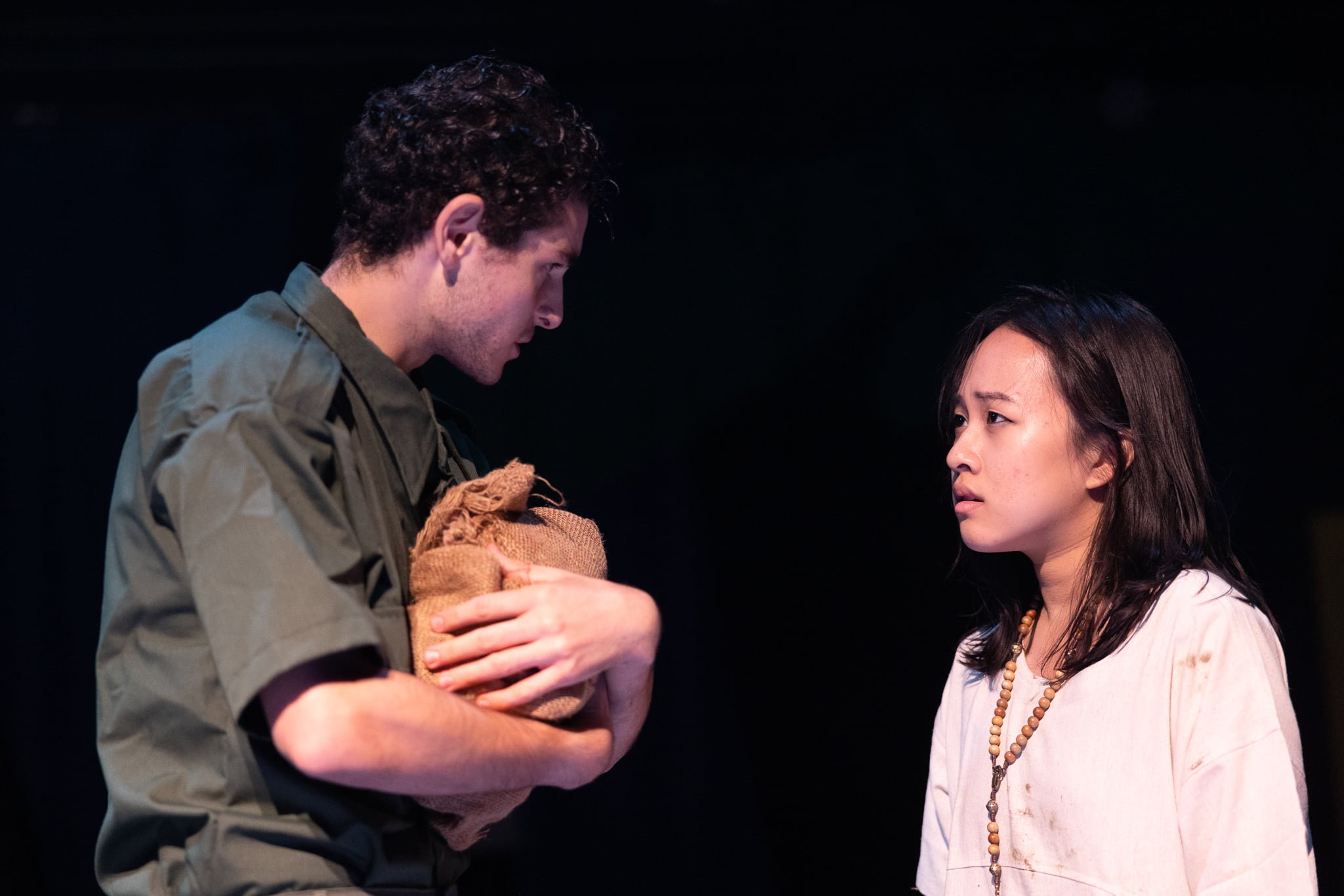At the Nitery Theater, where the Asian American Theater Project (AATP) debuted their show “Among the Dead” on Thursday night, everything is up close and personal. You can see the spike tape marking the stage, the microexpressions surfacing on actors’ faces. If you’re sitting in the front row, you’re not far from treading the boards yourself.
It’s the kind of intimate setting which, for all of digital theater’s innovations, cannot be replicated virtually. From the very beginning of the show when Ahmed Abdalla ’22, in character as a wisecracking Jesus, instructs the audience to silence their cell phones, the message is clear: this is not a cinema or a Zoom room, and you are no longer invisible. “Among the Dead” is a story that you, the witness, partake in.
Hansol Jung’s poignant play follows Ana, a Korean American woman who — through an old journal, a mysterious cigarette and a bit of divine intervention — is thrust back in time to World War II–era Burma. There, she finds herself inhabiting the body of her mother, Number Four, a Korean “comfort woman” forced into sexual slavery by the Japanese imperial army, and reliving Number Four’s time with Ana’s father Luke, a young American soldier.
Jung’s temporal weaving is not a “Tenet”-esque intellectual experiment for its own sake; rather, by literalizing the legacy of trauma, it unearths deep layers of anger, love and humanity. Under the masterful direction of Hope Yoon ’24 and Tiger Zhou ’22, the complexities of the narrative never veer into confusion or incoherence, and the production’s relatively simple lighting, sound, costume and set designs operate seamlessly, allowing the story to shine through. The Nitery’s stripped-down setting keeps the focus on the characters, highlighting their triumphs and flaws, their relationships and emotions.
“Among the Dead” is a story that is unflinchingly emotional; its plot, which explores topics like military power and sexual coercion, is unquestionably marked by violence. Despite its dark subject matter, however, the play is capacious enough to hold moments of joy, beauty and humor as well. Crucially, in its excavation of the violences against Asian women, “Among the Dead” still gives its female characters agency.
As Number Four, Junah Jang ’24 is a revelation, effortlessly disappearing into the role and fully embodying her character’s repressed rage. She has excellent comic timing too — a quality shared by Abdalla, whose impossibly charismatic stage presence brought about most of the evening’s laughs. Alison Rogers ’25 and David Mazouz ’23 as Ana and Luke, respectively, deliver equally-committed performances, and their chemistry, complicated by the partnership’s historical and familial contexts, is at once electrifying and deeply discomforting.
It would be easy to classify “Among the Dead” as a tragedy. To be sure, there is hubris and cowardice and suffering and catharsis. But tragedy often connotes fixity, inevitability — and while history, in its positivist sense, is unchangeable, we can change the narratives we tell about it. As the show’s program note reads, “not only does the past influence the present, but the present also influences the past.”
Ana cannot change her past, but she comes to understand it. So can we, and so we must. “Among the Dead” is a breathtaking return to live theater, with all the personal and political power the art form is capable of wielding. It is simply unmissable.
